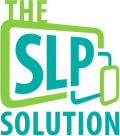Literacy Therapy Guides for SLPs
Step-by-Step plans for a variety of literacy skills – Plus, wording for your goals!
What is Task Analysis?
Task analysis is the process of breaking a larger skill down into smaller, sequential steps. With each step that the child masters, he grows closer to being able to perform the full skill independently. Tasks analysis is an evidence-based instructional method which has been found especially effective for children who do not respond to regular instruction, which makes it perfect for the children on our case loads.
While the process of task analysis has been studied and backed by research, there aren’t always agreed-upon ways to break down a skill. Every SLP may have a slightly different method of breaking down skills into step-by-step plans. What’s important is that the steps are achievable and sequential so that the child sees incremental success on the way to learning a new skill.
The following therapy guides represent our task analysis for each skill. You’ll also find sample text for your goals.
Looking for Therapy Activities? Worksheets? Troubleshooting? More Help?
We have more where this came from! Get access to the full SLP Solution Curriculum when you become a member!
Membership Includes…
- Therapy ideas for each step below
- No Prep Worksheets and Therapy Kits
- Troubleshooting Advice
- Access to our staff and community for asking questions
- Monthly webinars for continuing education
Our Step-By-Step Guides:
How to Use:
Click the skill that you’d like to expand. You’ll find our task analysis of the steps you can follow in therapy to teach that skill. You’ll also find sample text to include in your goal writing. To get detailed therapy activities for each step below, please join our membership program to get access to the full SLP Solution Curriculum.
- Screen for Phonological Awareness: Use the screening included below to determine which phonological awareness skills the child is missing. Choose one to start with.
- Rhyming (What rhymes with cat? Do cow and how rhyme?)
- Ability to segment words into syllables (How many syllables in umbrella? Um…bre…lla)
- Syllable Blending (I’m going to say some syllables, you put them together and tell me what word they make: um…bre…lla
- Alliteration: Ability to identify words with the same beginning sound (Do cat and cow start with the same sound? What else starts with the same sound as book?)
- Ability to identify words with the same final sound (Do book and take end with the same sound? What else ends with the same sound as boat?)
- Ability to segment words into individual sounds: consonant-vowel (CV), vowel-consonant (VC), and consonant-vowel-consonant (CVC) (How many sounds are in cup? c…u..p. 3! What sounds are in off? O…ff)
- Ability to segment words into individual sounds: CCVC, CVCC, CCVCC (What sounds do you hear in plate? .l…a…te)
- Sound Blending: (I’m going to say some sounds, you put them together and tell me what word they make: “d…o…g.” Dog!)
- Ability to manipulate sounds in words (what word do you have if you take the “p” off of “pan”?)
- Letter-sound correspondences: (What sound does the letter “b” make? What letter makes the “buh” sound?)
- Choose a Goal and Pre-Measure: Take baseline data for your primary narrative goal (for example, retelling a story while including all of the parts or creating their own story from scratch that contains certain elements).
- Pick a Story to Read and 1-3 Narrative-Teaching Strategies: For whichever book you choose, you’ll pick 1-3 strategies from the following lists of strategies:
- Pre-reading strategies (Preparatory Sets, Summarizing, Semantic Word Mapping, Think Alouds, Directed Reading/Thinking Activity, Music)
- During Story Strategies (Extensions, Questioning, Episode/Story Mapping)
- Post-Reading Strategies (Question-Answer Relationship, Internal States, Word Substitutions, Discussion Web, Flow Charting, Story Retelling, Story-Grammar Cuing, Journals, Art Activities, Dramatic Play, Story Generation)
- Do the Activity: Student will participate in pre-, during-, and post-reading activities to improve narrative skills with the speech-language pathologist.
- Re-Evaluate: Conduct the same task you did for your baseline data and see if the child’s ability to use narrative structure has improved.
- Main Idea in Pictures: Student will use a short phrase to identify the main idea of a single picture.
- Main Idea in Sentences: Student will use a short phrase to identify the main idea of a single written sentence.
- Diagram a Sentence into Main Idea and Details: When given a written sentence, Student will be able to identify which part represents the main idea and which part represents the detail(s).
- Diagram a Paragraph into Main Idea and Details: When given a written paragraph, Student will be able to identify which part represents the main idea and which part represents the detail(s).
- State Main Idea and Details in Sentences: After reading a written paragraph, Student will re-state the main idea and supporting details in his own words.
- Use Main Idea and Details to Plan for Writing: Student will use a pre-writing graphic organizer to plan a main idea and supporting details for a writing assignment.
What Do I Do in Therapy?
If you’re still not sure what to do in therapy, don’t worry! We have more resources for you! The SLP Solution Curriculum contains detailed descriptions of what you can do in therapy for each of the steps listed above. Join today to get all of the therapy ideas, worksheets, and support!

